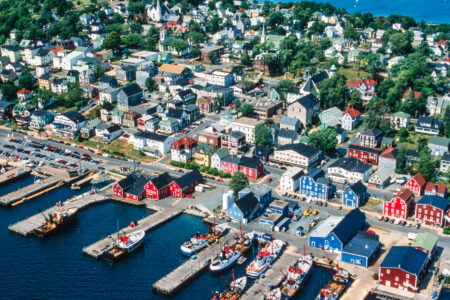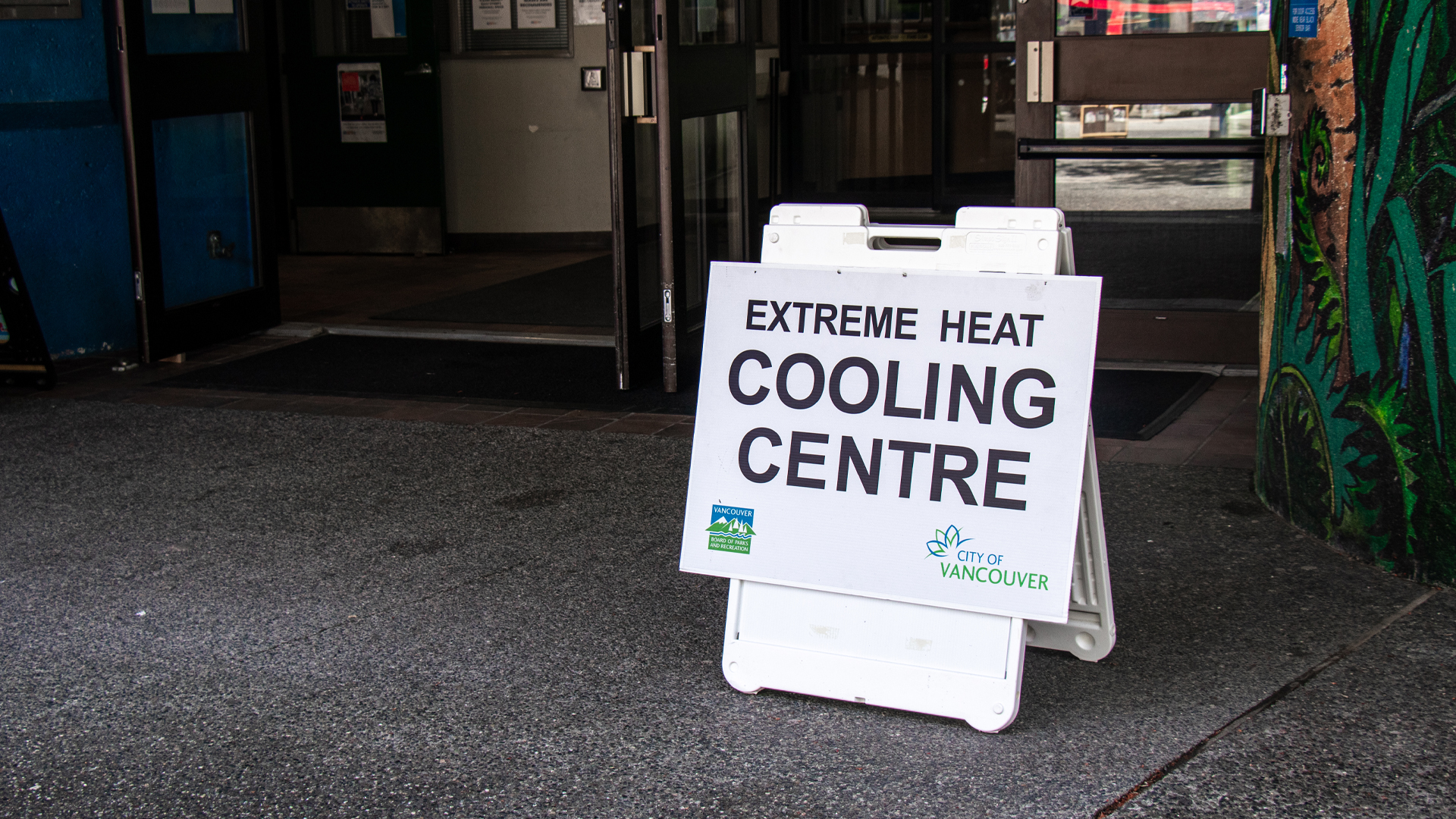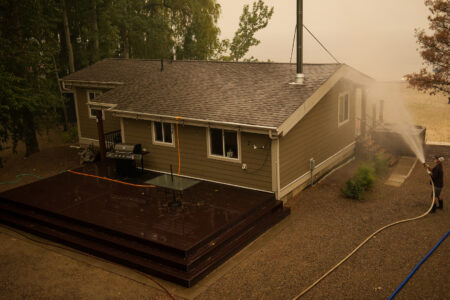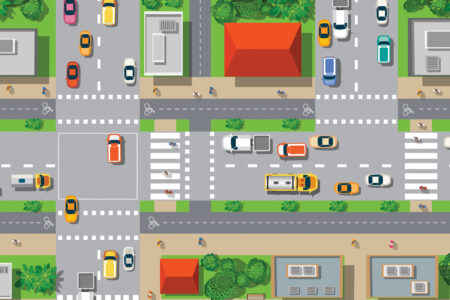
As British Columbia reels from a string of severe climate impacts, leaders at all levels — from the mayor of Abbotsford to the premier of the province — are calling for aggressive climate-adaptation strategies. A fair amount of tough talk is circulating about how quickly we can repair and replace the roads, bridges, railways and whole communities that weather disasters related to climate change have damaged, burned down or washed away.
This is a defining moment, not only for British Columbia, but also for the nation. For many people, the obvious response will be to “harden” our communities against climate impacts. To them, building back better means building back bigger — more concrete and steel for flood protection, and exponentially more powerful pumping stations.
But here is the truth. We cannot repair and replace climate-damaged or destroyed infrastructure the same way we built it in the first place. Emissions- and capital-intensive solutions that involve pouring more concrete and building more roads are maladaptive. In other words, resorting to the same approaches that got us into this mess won’t get us out of it.
It is a classic negative feedback loop. The more we build defensively with high-carbon solutions, working against natural systems, the less resilient our social systems, services and communities become, and the higher the costs of repairing them will be the next time.
There is a way out of this catch-22, of course. When considering ways to retrofit and develop our communities and provide the services they need, we can and must use and expand upon the existing services provided by nature. We must plan our communities more systemically, overcoming departmental and disciplinary silos, to protect and expand these services and plan for both community and ecosystem resilience under climate change. To do this, we must emulate the adaptive design and strategies in nature. Ultimately, we need to direct our limited resources into effective and durable solutions that are resilient, low carbon, and sustainable under rapidly changing social, economic, and environmental conditions.
In other words, we must build back softer.
What might this look like? For starters, local government leaders must learn how to design with nature, and not against it. This begins by ensuring municipal assets, such as power, filtration, and pumping infrastructure, are not placed in high-risk areas such as in floodplains, on hillsides or in wildfire interface areas. In addition, the process of approving permits for development, and other municipal tools, must be updated to prevent the placement of housing developments and transport infrastructure ─ roads, bridges and highways ─ in climate-exposed areas, so building is more efficient and sustainable. This approach may seem costly at first glance, but British Columbians have just been confronted by the costs of not doing nearly enough, costs that include the high toll on people, households and communities, the impact on insurance companies and premiums. This is not to mention the mountains of waste generated by such disasters.
Decisions made by public authorities now must include and disclose climate risks to ensure a more accurate reflection of the public return on investment over time. Cost-benefit analyses of projects need to incorporate the risks of projected climate impacts and the costs of locking in to high-carbon infrastructure, to identify opportunities to avoid disasters and emissions and their direct and indirect costs to our communities over time. This should apply to all orders of government.
Already some climate-savvy local governments are paying upfront costs now to incentivize the removal of residents and built assets from harm’s way. For instance, the City of Campbell River is using nature-based approaches, including consideration of purchasing coastal lands to minimize asset exposure to sea level rise. The Town of Grand Forks is pursuing a post-flood buy-out program to remove public and private assets from the floodplain. It sees the multiple advantages of updating and building using greener, smarter, more systemic, and low-carbon-resilient (LCR) approaches in community-building decisions (see the appendix of ACT’s LCR Decision Tool for case study examples).
Such approaches require that ecologists, biologists, engineers, architects, and land-use and social planners work collaboratively to enrich and advance the best uses of natural assets and green designs in support of our communities and of healthy, resilience ecosystems that advance biodiversity. In the June 2021 deadly heat dome, lower-income neighbourhoods that were mostly concrete and asphalt were hotter than leafier, greener and more prosperous districts. Much is known about the ways that cities can protect forested areas and increase the number of urban trees and vegetation to help moderate rising temperatures, thereby reducing communities’ vulnerability to climate-emergency impacts, while increasing access to nature and green spaces, and promoting biodiversity.
Nature is already providing many “services” to communities, for free. Wetlands, bogs, highly absorptive riparian areas and foreshores ─ even vegetation along our streets and green spaces in our neighbourhoods ─ function like sponges, retaining and absorbing excess rainfall while sequestering carbon. The more that municipalities incorporate natural systems, processes and features in the design and redesign of our communities, the more we can find ways to grow into and withstand this new climate future. As ACT founder Deborah Harford says, “Nature-based solutions are fast emerging worldwide as an essential and strategic approach to plan in a way that achieves multiple goals.”
ACT has tested LCR approaches in local governments. These approaches start with the understanding that reducing climate vulnerability and risk as well as greenhouse emissions will minimize the impact of climate change on our communities over time. Adopting this approach in all areas of local government work would help leaders and decision-makers think more systemically about how to future-proof strategy, planning and operations (see the appendix of this LCR Decision Tool for case study examples).
Every region of Canada will eventually experience climate impacts on the scale that has plunged British Columbia into three states of emergency within one year. The decisions made in that province today will set the tone for climate retrofit and recovery work across the country tomorrow.
It might seem counterintuitive, but building back better does not mean pouring more concrete, building higher dikes and sea walls, and installing more powerful pumps. Our leaders and decision-makers must heed the growing body of research and evidence in Canada pointing to the need for municipal climate adaptation and planning, nature-based solutions, and LCR approaches. In doing so, they will ensure a more stable and prosperous future for everyone.









